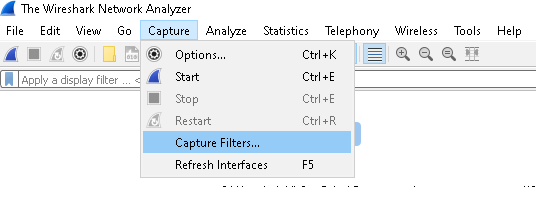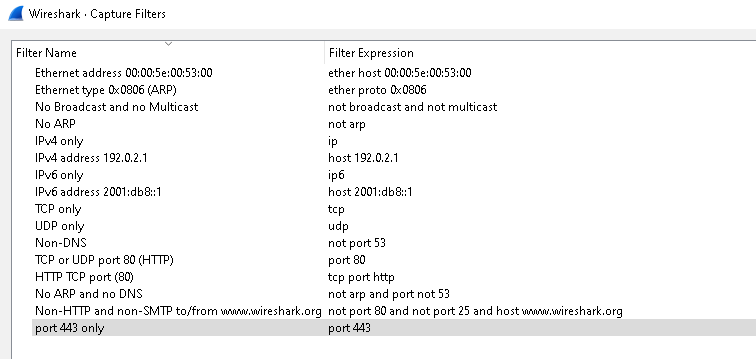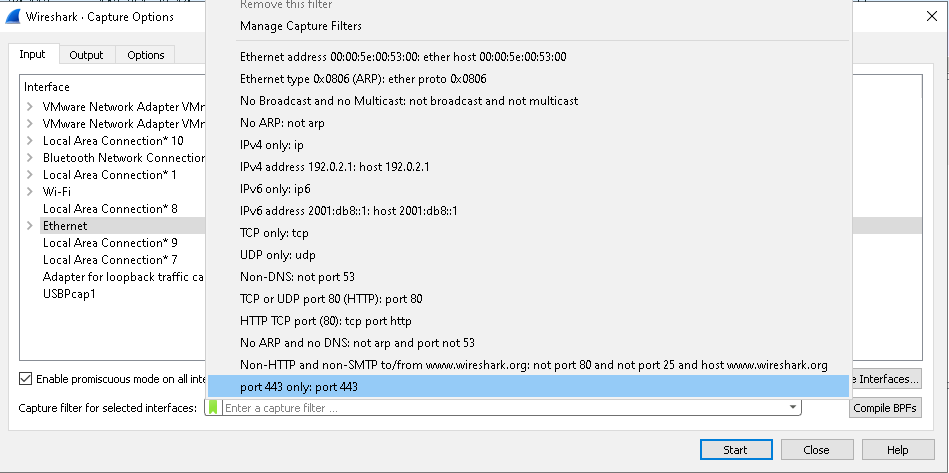Why do we use Wireshark capture filters?
Capture filters are used to limit captured traffic based on a specific criteria.They limit the packets saved in the '/temp' location when capturing. Capture filters cannot be applied to existing capture files, only those that are running. This can be very useful when capturing on a busy network, or when looking for a specific traffic type.
If you're familiar with the Linux native 'tcpdump' tool, the capture filters in Wireshark uses the same Berkeley Packet Filtering syntax.
Be careful when using capture filters, you should use them sparingly. This is because you can apply display filters after the capture, but capture filters drop the packets and therefore are not saved in the capture file.
There are a number of builtin capture filters that can be viewed and modified by choosing "Capture" > "Capture Filters" from the menu.

Additionally, Wireshark comes with a default set of filters, which are stored in the Wireshark program file directory. The file name is cfilters and you can see that the contents of the file resemble the following:


